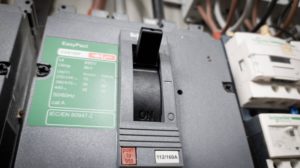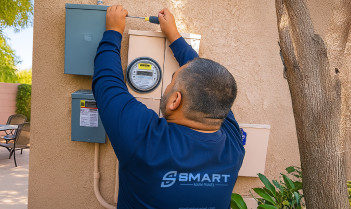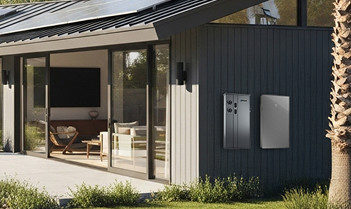
Date
200a Service Disconnect
Are you familiar with what a 200a service disconnect is? If not, don’t worry, we’ve got you covered! In this article, we’ll explain why having a 200a service disconnect is crucial for your home or business. Whether you’re a homeowner or a business owner, understanding the importance of a 200a service disconnect can help ensure the safety and efficiency of your electrical system. So let’s dive in and explore this essential component that plays a significant role in protecting your electrical equipment and preventing potential hazards.
What is a 200a Service Disconnect?

A 200a Service Disconnect refers to a specific type of electrical switch that is designed to protect an electrical system from overloads and faults. It is an essential component in residential, commercial, and industrial settings, as it acts as the main power cutoff for the entire electrical system. The “200a” in the name refers to the amperage rating of the disconnect, indicating that it has a capacity of 200 amps, which is commonly used in medium to large electrical systems.
Definition and Purpose
A 200a Service Disconnect is a critical electrical component that provides a means to disconnect power from a building or facility. It is typically installed near the service entrance or utility meter, allowing easy access to shut off electricity to the entire building in case of emergencies, maintenance, or repairs. The main purpose of a 200a Service Disconnect is to protect both the electrical system and its occupants by quickly shutting off power in situations where it is necessary.
Components and Construction

A typical 200a Service Disconnect consists of several key components. These include the main breaker, disconnect switch, service entrance conductors, meter socket, and grounding system. Each component plays a crucial role in ensuring the safe and efficient operation of the electrical system.
The main breaker is the primary control point of the disconnect and is responsible for interrupting the flow of electricity to the entire building when necessary. The disconnect switch allows for the manual disconnection of power and is often operated by a lever or a knob. The service entrance conductors are the cables that bring electricity from the utility’s distribution system into the building. The meter socket houses the electric meter, allowing the utility company to measure the amount of electricity consumed. Lastly, the grounding system provides a safe path for electrical faults to dissipate into the ground, minimizing the risk of electrical shock or fire.
Reasons for Installing a 200a Service Disconnect
There are several compelling reasons to install a 200a Service Disconnect in your electrical system. Understanding these reasons can help you make an informed decision and ensure the safety, compliance, and efficiency of your electrical setup.

Electrical Safety
One of the primary reasons for installing a 200a Service Disconnect is to enhance electrical safety. By having a dedicated disconnect switch, you have the ability to quickly cut off power to your entire electrical system in case of emergencies or accidents. This is particularly important during electrical fires, as it can prevent further damage and facilitate the safe evacuation of occupants.
Compliance with Electrical Codes
Installing a 200a Service Disconnect is often a requirement to comply with electrical codes and regulations. Electrical codes are put in place to ensure the safe installation and operation of electrical systems. Many municipalities and jurisdictions mandate the use of a 200a Service Disconnect as part of their building codes, making it necessary for proper compliance.
Ability to Handle Higher Loads
Modern homes and businesses have significantly higher electrical demands compared to previous years. With the advent of technology and the increased use of electrical appliances and devices, it has become crucial for electrical systems to handle higher loads. A 200a Service Disconnect is capable of accommodating these higher demands by providing adequate power capacity.
Components of a 200a Service Disconnect
To understand how a 200a Service Disconnect works, it is important to familiarize yourself with its key components, each of which plays a critical role in the overall functionality and safety of the system.
Main Breaker
The main breaker is located within the disconnect and serves as the primary point of control for interrupting the flow of electricity. It is responsible for protecting the electrical system from overloads and short circuits. When the main breaker is switched off, power is cut off from the entire building, ensuring safety during emergencies or maintenance.
Disconnect Switch
The disconnect switch provides a manual means of disconnecting the power supply. It is typically a lever or a knob that can be easily operated to shut off the electricity to the building. This switch allows the occupants or maintenance personnel to safely work on the electrical system by ensuring that there is no power flowing through it.
Service Entrance Conductors
Service entrance conductors are the cables that carry electrical power from the utility company’s distribution system to the building. These conductors are connected to the disconnect and play a vital role in safely delivering electricity to the electrical system. They are typically made of copper or aluminum and are sized according to the electrical load requirements of the building.
Meter Socket
The meter socket is the enclosure that houses the electric meter, which is used by the utility company to measure the amount of electricity consumed by the building. It is usually mounted adjacent to the disconnect and provides a point of connection for the service entrance conductors. The meter socket allows for easy monitoring and billing of the electricity usage.
Grounding System
The grounding system is a crucial component of a 200a Service Disconnect as it ensures the safety of the electrical system and its occupants. It provides a safe path for stray electrical currents and faults to dissipate into the ground, preventing the risk of electrical shock or fire. The grounding system typically includes grounding electrodes, conductors, and bonding connections to ensure a low-resistance path for fault currents.
How Does a 200a Service Disconnect Work?
Understanding how a 200a Service Disconnect works is essential for ensuring electrical safety and the proper functioning of your electrical system. Let’s explore the power flow and circuit interruption mechanism, as well as the safety features and emergency shutdown associated with a 200a Service Disconnect.
Power Flow and Circuit Interruption
In a typical electrical system, electricity flows from the utility company’s distribution system through the service entrance conductors, into the meter socket, and finally into the 200a Service Disconnect. The main breaker within the disconnect serves as the primary point of control, allowing or interrupting the flow of electricity to the building.
When the main breaker is in the “on” position, electricity flows through the service entrance conductors to power the various circuits and appliances in the building. However, in the event of an overload or short circuit, the main breaker is designed to automatically trip, cutting off the power supply to the entire building. This instantaneous interruption of electricity protects the electrical system from damage and ensures the safety of the occupants.
Safety Features and Emergency Shutdown
A 200a Service Disconnect is equipped with various safety features to prevent electrical accidents and facilitate emergency shutdowns. One such feature is the manual disconnect switch, which provides a convenient means to cut off power to the building during emergencies or maintenance. By simply operating the disconnect switch, you can ensure that no electricity is flowing through the system, making it safe to work on or evacuate the building if necessary.
Additionally, a properly installed grounding system plays a critical role in enhancing electrical safety. The grounding system provides a low-impedance path for electrical faults, redirecting the current safely into the ground. This helps prevent electrical shock hazards and reduces the risk of fire caused by electrical faults.
Importance of Properly Installed and Maintained 200a Service Disconnect
A properly installed and well-maintained 200a Service Disconnect is of utmost importance for the safe and efficient operation of your electrical system. Let’s explore some key reasons why investing in a quality installation and regular maintenance is crucial.
Preventing Electrical Accidents
Electrical accidents, such as electrical shocks and fires, can have devastating consequences. By having a properly installed 200a Service Disconnect, you can significantly reduce the risk of these accidents. The disconnect provides a reliable means to isolate the electrical system during emergencies, ensuring the safety of occupants and minimizing the potential for electrical hazards.
Protecting Electrical Components
Electrical components, such as circuit breakers, wiring, and appliances, can be damaged or deteriorate over time. A properly installed and maintained 200a Service Disconnect can help protect these components from electrical faults and overloads, prolonging their lifespan and reducing the need for expensive repairs or replacements.
Maximizing Electrical System Efficiency
Efficiency is key when it comes to your electrical system. A properly installed 200a Service Disconnect ensures that power is distributed evenly and safely throughout the building, minimizing energy waste and optimizing system performance. By maintaining a well-functioning disconnect, you can maximize the efficiency of your electrical system, resulting in lower energy bills and reduced environmental impact.
Benefits of Upgrading to a 200a Service Disconnect
If you currently have a lower amperage service disconnect, upgrading to a 200a Service Disconnect can offer numerous benefits. Let’s explore some of the advantages of this upgrade.
Increased Electrical Capacity
Upgrading to a 200a Service Disconnect provides a significant increase in electrical capacity. This allows you to handle higher loads and accommodate the growing electrical demands of your home or business. With more power available, you can connect and power additional appliances, devices, and equipment, without risking overloading the electrical system.
Reduced Fire Hazards
Electrical fires can have catastrophic consequences, causing property damage, injuries, and even loss of life. By upgrading to a 200a Service Disconnect, you can reduce the risk of fire hazards. The increased capacity of the disconnect allows for better distribution of electrical power, minimizing the potential for overloaded circuits and overheating, which are common causes of electrical fires.
Facilitating Future Expansion
If you have plans for expanding your home or business in the future, upgrading to a 200a Service Disconnect is a wise investment. With its higher capacity, the upgraded disconnect can handle the increased electrical demands of the expansion without the need for additional upgrades or costly modifications. This ensures seamless integration and long-term reliability for your electrical system.
When is a 200a Service Disconnect Required?
The requirement for a 200a Service Disconnect depends on the specific application and electrical codes in your jurisdiction. Let’s explore the situations where a 200a Service Disconnect is commonly required.
Residential Applications
In many residential applications, particularly for medium to large homes, a 200a Service Disconnect is typically required. This is due to the increasing electrical demands of modern households, which includes higher wattage appliances, multiple heating and cooling systems, and a variety of electronic devices. To ensure the efficient and safe operation of the electrical system, a 200a Service Disconnect is often mandated by building codes when installing or upgrading residential electrical systems.
Commercial and Industrial Applications
Commercial and industrial buildings have even higher electrical demands compared to residential properties. The operation of heavy machinery, sophisticated equipment, and extensive lighting systems requires a robust electrical infrastructure. A 200a Service Disconnect is often required in these applications to handle the higher loads and ensure the safety and reliability of the electrical system.
Common Issues and Troubleshooting of 200a Service Disconnect
While a properly installed and maintained 200a Service Disconnect is generally reliable, there can be occasional issues that may arise. Let’s explore some common problems and troubleshooting steps that can help resolve them.
Overheating
Overheating can occur in a 200a Service Disconnect due to various reasons, including poor connections, overloaded circuits, or faulty components. If you notice signs of overheating, such as melting insulation or a burning smell, it is important to immediately shut off the power and contact a qualified electrician. Regular maintenance, proper load balancing, and inspection of connections can help prevent overheating issues.
Tripped Breakers
A tripped breaker in a 200a Service Disconnect is a safety feature designed to protect the electrical system from overloads and short circuits. If you experience frequent tripped breakers, it could indicate an underlying issue, such as a faulty electrical device, overloaded circuit, or wiring problem. It is essential to identify and rectify the cause of the tripping to prevent damage to the electrical system and ensure uninterrupted power supply.
Grounding Problems
A properly functioning grounding system is crucial for the safe operation of a 200a Service Disconnect. If you experience grounding problems, such as electrical shocks or inconsistent electrical performance, it is important to have a qualified electrician inspect the grounding system. Faulty grounding can pose serious risks, including the potential for electrical shock and fire hazards.
Hiring a Qualified Electrician for Installation and Maintenance
To ensure the proper installation and maintenance of your 200a Service Disconnect, it is essential to hire a qualified electrician. Consider the following factors when selecting an electrician for your project.
Licensed and Insured Professionals
Choose an electrician who holds a valid electrical license and carries appropriate insurance coverage. This helps ensure their competence, professionalism, and adherence to safety standards. Licensed electricians have the necessary training and knowledge to safely install and maintain electrical systems, including 200a Service Disconnects.
Experience and Expertise
Look for an electrician with experience and expertise in installing and maintaining 200a Service Disconnects. Electrical systems can be complex, and it is important to hire someone who understands the specific requirements and standards associated with the disconnect.
Proper Permits and Inspections
A reputable electrician will obtain the necessary permits and arrange for inspections as required by local regulations. This ensures that the installation or upgrade of your 200a Service Disconnect complies with electrical codes and safety standards. Be cautious of electricians who try to bypass permit requirements, as this can lead to potential hazards and legal issues.
Conclusion
A 200a Service Disconnect is an essential component of any electrical system, offering both safety and functionality. By understanding its definition, purpose, and components, as well as the benefits and requirements associated with it, you can make informed decisions about its installation and maintenance. Remember to always hire a qualified electrician for the installation, troubleshooting, or upgrading of your 200a Service Disconnect to ensure its safe and efficient operation. Prioritizing electrical safety and compliance is critical for protecting your property, maximizing efficiency, and enhancing the overall reliability of your electrical system.
What is a 200A service disconnect?
A 200A service disconnect is a device that safely interrupts an electrical circuit of up to 200 amperes, effectively separating part or all of the electrical power in a building. Its used in case of emergencies or during maintenance and repairs.
Why do we need a 200A service disconnect?
A 200A service disconnect provides a safe way to shut off electricity when necessary for safety reasons or during work on the electrical system. It helps protect both people and equipment by preventing accidental contact with live wires.
How does grounding play a role in the functioning of a 200A service disconnect?
Grounding ensures that any leakage current due to insulation failure or other issues has an easy path back to the ground, reducing the risk of electric shock. It also aids in ensuring proper operation of protective devices like breakers and fuses, including the 200A service disconnect.
Where should you install a 200A service disconnect?
The National Electrical Code (NEC) requires that the main service disconnect be installed either outside or inside near the point where the main power lines enter your home, typically within sight from and readily accessible near your electricity meter.
Can homeowners install their own 200A Service Disconnect?
While its technically possible for homeowners to install their own, its strongly recommended they hire professional electricians for this task due to its complexity and potential danger involved with working on high-capacity electrical systems.



